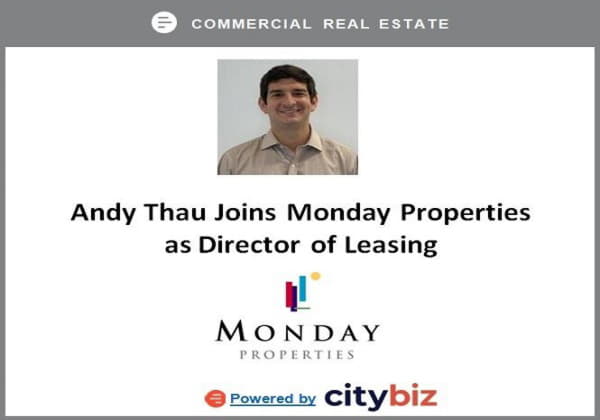
Roberto Busó-García
Click here for Part I & Part III
Baltimore is rich with artists, entrepreneurs and storytellers with unique voices and projects. However, many of them lack the resources and connections that are necessary to bring their projects to life…until now.
Launched in March 2016 and led by Roberto Busó-García, the Saul Zaentz Innovation Fund in Film & Media at Johns Hopkins University identifies innovative visual media artists in Baltimore and connects them with prestigious artists, veteran film-makers, executives and technologists to produce powerful projects and bring meaningful stories to life.
The Fund’s Bold Voices, New Paradigms Incubator includes a mentorship program that centers around one-on-one consultancies from those in the industry; an intensive lab where fellows work one-on-one with veteran artists to guide their pre-production and development process; and Brain Trust meetings where special industry guests lead brainstorming sessions to solve project-specific challenges.
“What is spectacular about Mr. Zaentz’s career as a film producer is that most of those movies he financed outside of the Hollywood system,” Busó-García said in an interview with citybizlist’s Edwin Warfield. “He always found a best way of producing them at the highest level…That is a big part of the legacy that he leaves behind and I think that is sorely needed today not only in Hollywood but in a lot of the arts.”
The only one of its kind at any university in the country, the fund is open to residents of Baltimore as well as students from Johns Hopkins, Maryland Institute College of Art (MICA), Peabody and Hopkins alumni with film, television, virtual reality or technology-centered projects.
The Saul Zaentz Innovation Fund launched in 2016 through a $1 million grant from the Saul Zaentz Charitable Foundation. Zaentz was a three-time Academy Award-winning producer whose work included “One Flew Over the Cuckoo’s Nest,” “Amadeus” and “The English Patient.” Over the last year the fund has awarded $410,000 in production and development support to 19 fellows and provided mentorship and production assistance to 37 artists.
Recently, Busó-García sat down with Edwin Warfield to discuss the Saul Zaentz Innovation Fund, Maryland’s film industry and the importance of supporting independent artists and filmmakers.
EDWIN WARFIELD: Tell us about Saul Zaentz.
ROBERTO BUSÓ-GARCIA: Saul Zaentz was a legendary producer both of music and motion pictures. He is renowned for those three movies that won best picture – for “One Flew Over the Cuckoo's Nest,” “Amadeus” and “The English Patient.” But he also produced an incredible adaptation of Milan Kundera’s “The Unbearable Lightness of Being.” He also produced a very interesting animated version of the “Lord of the Rings” trilogy and many other movies called, “At Play in the Fields of the Lord.”
What is spectacular about Mr. Zaentz’s career as a film producer is that most of those movies he financed outside of the Hollywood system. Now, people see him as a paragon or like a paradigm of like the successful Hollywood producer, but Hollywood had very little to do with it. You know they would not touch those movies. I do not know, they thought they were too cerebral, too risky for audiences, but Mr. Zaentz believed in them.
Most of them, if not all of them, came from spectacular literary sources that most people in Hollywood had not even read, you know, to be fair, he deeply believed in them. He always found a best way of producing them at the highest level. Because as a producer it was not only about the art which was the first thing that he thought about it and, grafting great works of art from other works of art in different formats, but also they had to be successful. That is the magic of it, because these are vastly commercially successful films that people would not finance and that happens even after some of them were that successful. He always had to go back and figure a way of getting them done. So, that is his legacy. That is a big part of the legacy that he leaves behind and I think that is sorely needed today not only in Hollywood but in a lot of the arts, people who know how to find stories that have to be told and believe in them to the point that they would get them toward the highest level no matter of the obstacles put in their way.
EDWIN WARFIELD: So what does the Saul Zaentz Innovation Fund seek to do?
ROBERTO BUSÓ-GARCIA: The Saul Zaentz Innovation Fund in Film & Media at Johns Hopkins tries to mirror that aspect of Mr. Zaentz’s legacy. We believe in the power of the idea. Our main mission is to identify, embolden and empower new voices with those incredible ideas here in Baltimore, in the Johns Hopkins community.
We feel that the biggest problem we have right now in the industry is the problem of access, that if you find spectacular ideas then you can take those people and put them together with the right team and make those projects a reality, that the world is going to be better for it. That is what the firm seeks to do, to identify these artists or these people who maybe don’t think of themselves as an artist but are and develop them. The mentorship program, the screenplay lab, the documentary lab, all these programs, we really want to do the same thing. They want to find the best version of the project within the artist herself or himself and once they know that and once they are committed to that, then to take them to the next step: what is the best way of getting this done at the highest level to what she or he wants to achieve?
One of the board members in the board of directors is Honorable Marvin Garbis, who is here in Baltimore. He is a Johns Hopkins alumni, and Judge Garbis was the one who brought us together, who brought the foundation down to Baltimore, here to Station North. We met with them, we shared with them our vision for filming at Hopkins and at Baltimore film and media but it is not only film, there is reality, small time media installations, it is telling old stories with new technology or new stories with old technology and they were very interested in finding a way to create a space where people could come together and graft impactful necessary stories in the 21st century and they thought that Baltimore was prime for that, both because of the commitment of the Johns Hopkins University and our artists to this craft, but also they had a sense that there were a lot of important stories to be told.
Connect with Roberto on LinkedIn


Edwin Warfield, CEO of citybizlist, conducts the CEO Interviews.
If you're interested in reaching CEOs, please contact edwin.warfield@citybuzz.co
Connect on LinkedIn
















